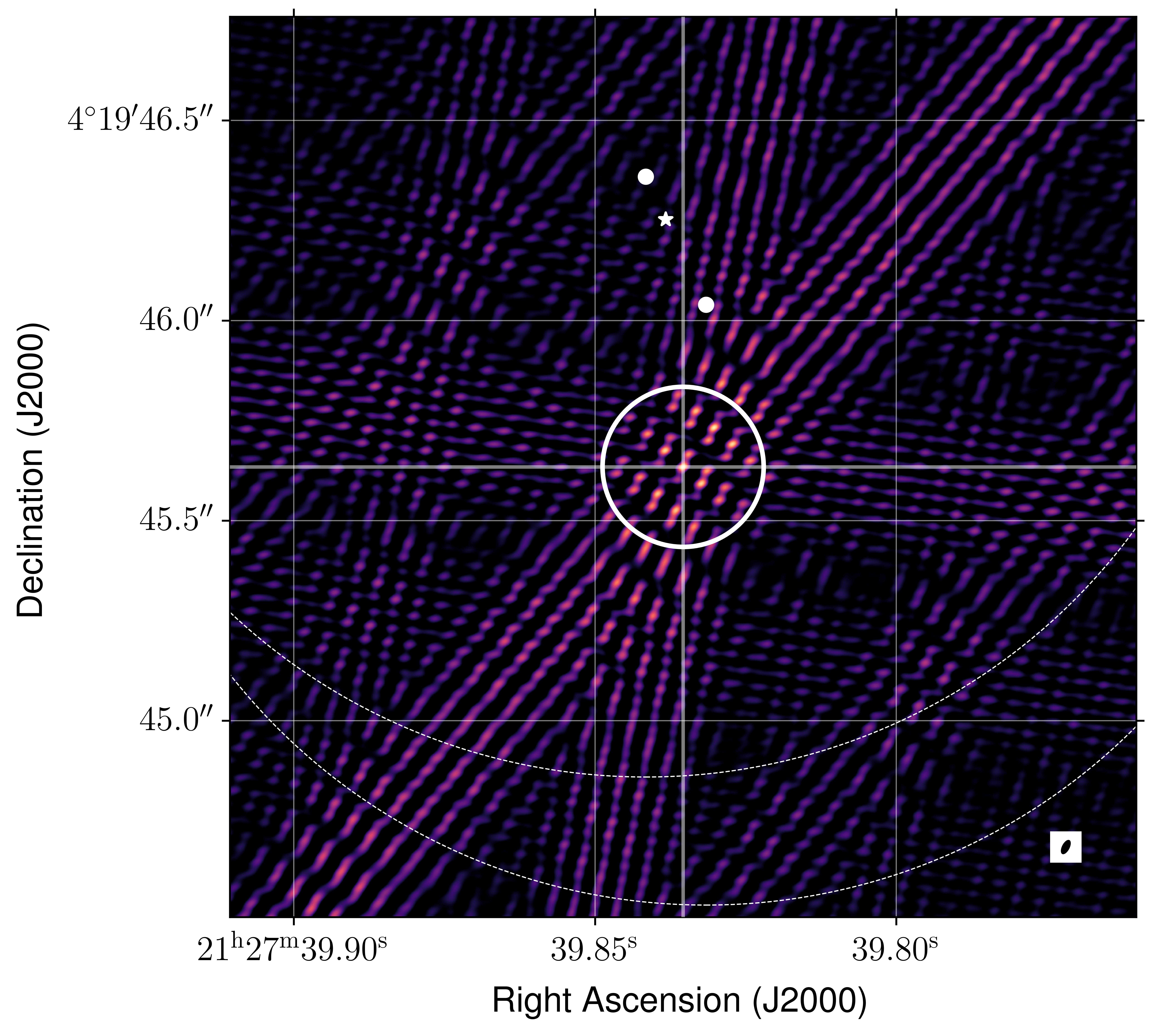 March 20, 2024
March 20, 2024
We observed the recently discovered FRB 20240114 (ATel #16420) with a sub-array of European Very Long Baseline Interferometry (VLBI) Network (EVN) dishes (EVN-Lite mode), as part of the PRECISE project. We had two observing runs, both of which were carried out at L-band (1254 - 1510 MHz). We recorded raw voltages as 2-bit samples, storing both left and right circular polarisations at all participating stations. The raw voltage data from the Effelsberg telescope (the most sensitive dish in the array) were transferred to Onsala Space Observatory, where they were processed to generate total intensity (Stokes I) filterbanks at a time and frequency resolution of 64 microseconds and 31.25 kHz, respectively. The data were then searched using the Heimdall software package, limiting the DM search range to 527.7 ± 50 pc cm-3. True astrophysical bursts were automatically distinguished from human-generated radio frequency interference using the ML-classifier FETCH (Agarwal et al. 2020).
Epoch 1 (PRECISE code PR318A, EVN code EK056A) was conducted on Thursday 15 Feb 2024 (MJD 60355) from 06:41:35 UT until 12:00:00 UT with the following stations: Effelsberg (Germany), Torun (Poland), Onsala (Sweden), Westerbork (The Netherlands), Noto (Italy), Irbene (Latvia) and six e-MERLIN stations (all but the Lovell telescope, United Kingdom). The telescopes were pointed at the previously reported CHIME/FRB baseband position of this source (21h27m39.888s +04d21m00.36s, J2000, ATel #16420). During this run we detected seven bursts from FRB 20240114A.
Epoch 2 (PR319A / EK056B) was conducted on Tuesday 20 Feb 2024 (MJD 60360) from 06:16:35 UT until 11:56:23 UT with the same stations as in Epoch 1, with the addition of the Tianma 65-metre Telescope (China). In this run the telescopes were pointed at RA = 21h27m39.8367, Dec = +04d19m46.2333s (J2000), which is a weighted average from the two quoted MeerKAT positions of this source (ATel #16446). During this run we detected 13 bursts from FRB 20240114A.
We used phase-referencing, where the scans on FRB 20240114A are interleaved with phase-calibrator scans on J2125+0441. We obtained a total on-source observing time of 200 minutes (Epoch 1) and 202 minutes (Epoch 2) for FRB 20240114A. After the bursts were found in the Effelsberg data, the full set of raw voltage data from all individual stations were shipped to JIVE over the internet. The data from Epoch 1 were correlated with SFXC (Keimpema, 2015). The data reduction from Epoch 2 is still in progress.
An initial, rough burst position was derived using a delay-mapping technique (see Marcote et al. 2020, for more details) on the brightest burst of Epoch 1. The delay-mapping position is RA = 21h27m39.9s, Dec = +04d19m43.4s (J2000) and has an estimated uncertainty of a few arcsec. The burst data (of the one bright burst that was used in the delay-mapping) was then re-correlated at the delay-mapping position. The data was then calibrated and imaged following standard procedures in CASA. From this we find a best position for the burst (J2000):
RA = 21h27m39.835s
Dec = +04d19m45.634s
Since this position is derived from a preliminary analysis of a single burst there is some ambiguity in the burst position due to sidelobe structure. We thus quote a conservative uncertainty on this position of +/-200 milliarcseconds (see plot below). A careful analysis of all burst data is expected to robustly provide a positional uncertainty on the order of milliarcseconds.
Our EVN-PRECISE position is well within the 1-sigma confidence interval of the MeerKAT position(s), which have an uncertainty of ~1.5 arcseconds (ATel #16446).
A more detailed analysis of all EVN-PRECISE bursts and continuum data is underway.
Snelders et al. 2024, The Astronomer's Telegram, No. 16542.
